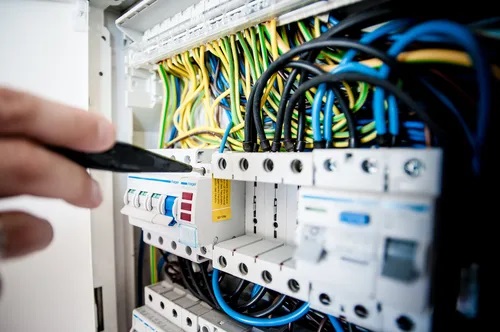There are a lot of different components that can go into and make up an electrical circuit. There are plenty of specialist pieces that can perform particular and niche functions, as well as components that you’d expect to find in most circuits regardless of complexity.
When building a circuit, it’s important to do it properly and use the correct components to ensure that there are no issues or faults. Here are the four most essential electrical pieces that you need to make even the most basic devices.
A Power Source
Without power pumping the current through the electrical wire, no circuit will work. A power source is what brings electronics to life, so every circuit must have one.
The most common and obvious power source for handheld circuits is a battery. These components convert chemical energy into electrical energy in order to make the circuit operate. There are two different cells of a battery known as an anode and cathode that are positively and negatively charged respectfully. The circuit needs to be connected to these points to work.
Apart from a battery, to power larger items, you can also get the energy from the mains. When doing these circuits, you usually need to lower the voltage to make it more suitable for the device, as the mains’ power can fry the device if not reduced. This means that a component called a transformer needs to be installed to the circuit to ensure that the parts get the desired voltage.
Switches
Switches are perhaps the most overlooked components of an electrical circuit, perhaps due to how accustomed we are with having the ability to turn our devices on and off. Switches are simple components: they’re straightforward mechanisms that, when interacted with, disconnect the circuit to make it inoperable.
This is really useful as it gives people greater control over their electricity, making devices safer and easier to use. There are so many different types of switches, each having their own unique function and viability, and they can all be browsed on this Electronic Parts API.
Switches aren’t only used to disconnect circuits; they can also be used in a more complex manner to connect various different circuits together, allowing creators to build more versatile devices.
The Wire
When talking about essential components, it’s important to remember that the electricity flows through the conductive wire should also be considered a component. Without it, there would be nothing connecting the various pieces together.
Electricity flows very similarly to water, meaning that these conductive wires can be imagined as pipes allowing the electricity to flow through. The wire needs to be made of a conductive material for it to work, with the best options being copper, aluminum, and some alloys, not to mention gold that can be found on many circuit boards in high-tech devices.
Fuses
Fuses are an essential component of electrical circuits because they make it much safer to use and operate. Fuses help preserve components and keep them from being overloaded by excessive current. It does this by breaking the circuit if it experiences too much current. This is why fuses are installed into many main electronic plugs and sockets and are made out of a connection body, support, contacts, and metal fuse materials like copper or zinc.



